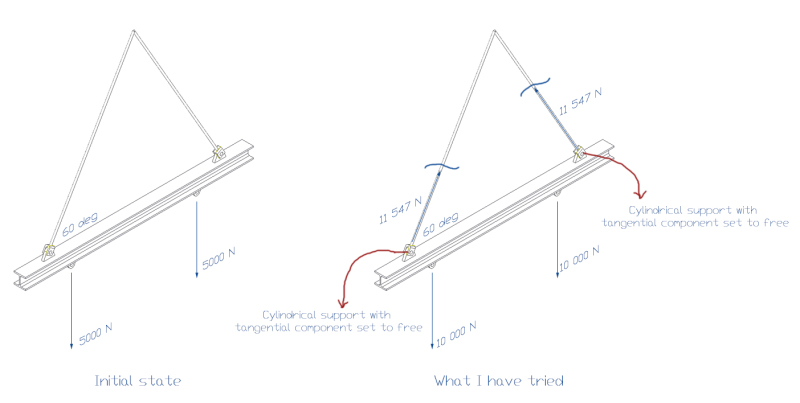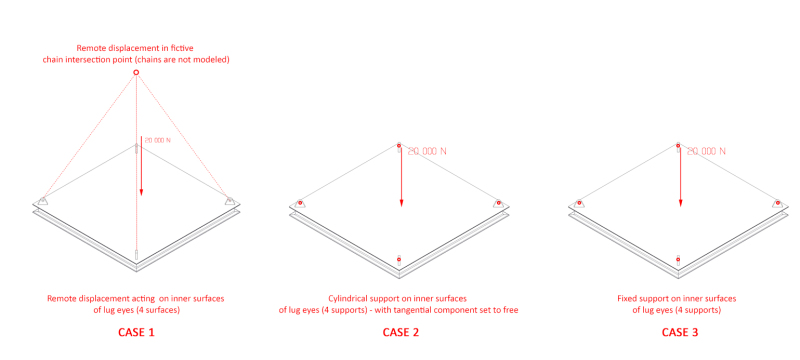SukiLeinen
Mechanical
- Oct 10, 2016
- 20
I have STEP model of simple spreader (I beam) with two lifting lugs for my home assigment. I want to simulate liffting of 2 ton load with my spreader. How to simulate lifting (lifting chains)in Ansys Workbench 16 only to transfer movment. What constraints to use. I don't need stress in lifting chains or lifting equipment, only in spreader and lifting lugs (When spreader is loaded with 2 ton load).
Thank You very much.
Thank You very much.


